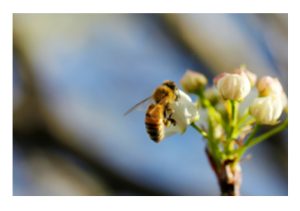
The City of Takoma Park Safe Grow Program helps to protect our environment and Pollinators Play a Huge Role!
Tips for Making a Pollinator-Friendly Garden
Thinking about changing up your garden? You can design a garden that is not only beautiful for you but also provides a helpful habitat for pollinators! Here are our tips for making a pollinator-friendly garden.
for pollinators! Here are our tips for making a pollinator-friendly garden.
Plant Native
Not just any plant will make a pollinator-friendly garden. You need plenty of native plants to supply pollen and nectar for our little native friends. Ideally, you’ll have a mix of plants that will bloom from spring through summer and as late into the fall as possible to provide a continual resource for pollinators. For us in Maryland, see the recommended list of native plants. These will help attract bees, butterflies, and birds to your garden and help them on their pollinating journey!
Planting in groups allows the pollinators to work thoroughly and efficiently!
Plant in Groups
Instead of spacing out your pollinator-friendly plants, plant them in groups. Plant at least three to five types of pollinator plants together and layer them throughout your garden. Not only will you get beautiful drifts of color, but you’ll be helping bees and other pollinating insects out. When you space out plants, you make pollinating insects have to move around a great deal, and that can tire them out and slow them down. Groupings allow the pollinators to work these areas thoroughly and efficiently!
Go Natural
To combat pests, go natural instead of using synthetic chemicals. Many pesticides are toxic to bees and other beneficial organisms, so use sticky traps and pheromone traps instead. You can also work with nature to control pests and diseases by using organic fertilizer and quality compost and removing weeds and infected plants.
Add Water
Adding water spots is a must for a pollinator-friendly garden. Providing water sources will attract more pollinators and help them stay hydrated in warm weather. Any water source, natural or man-made, will do. Adding a birdbath is a great way to add a water source as well as decoration to your garden. A hanging dripping bottle also works. Even a simple puddle will provide much-needed water to pollinators.
Provide Resting Spots
Bees, butterflies, and other pollinators need shelter to rest, protect themselves from the elements, hide from predators, and rear their young. If you can, allow part of your garden to grow a little wild. This will provide protection for pollinators as well as allow you to sit back, relax, and let nature do the work for you! You can also provide a pile of grass cutting or a decomposing log in a sunny place on the ground. Even keeping a dead tree standing creates necessary nooks for butterflies and bees.
